How to Replace Dishwasher Fill and Drain Hose
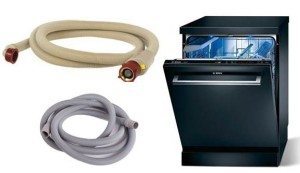 The inlet and drain hoses in the dishwasher are components that are supplied to the market along with the equipment itself. The manufacturer gives them a good guarantee, and therefore breakdowns or defects occur very rarely with them. However, situations are different, it may turn out that you will find yourself in one of those rare cases when the hose breaks, it may happen that there are no hoses in the kit at all due to the fault of the manufacturer, or they will be too short. In general, replacing the hose or extending it may be necessary, so we will tell you in detail how to do it correctly.
The inlet and drain hoses in the dishwasher are components that are supplied to the market along with the equipment itself. The manufacturer gives them a good guarantee, and therefore breakdowns or defects occur very rarely with them. However, situations are different, it may turn out that you will find yourself in one of those rare cases when the hose breaks, it may happen that there are no hoses in the kit at all due to the fault of the manufacturer, or they will be too short. In general, replacing the hose or extending it may be necessary, so we will tell you in detail how to do it correctly.
Preparation for repair
First, prepare for the repair yourself and start preparing the dishwasher. First of all, we disconnect the washing machine from the electrical network, water supply and sewerage. Then we move it out into the open space, having previously laid down cellophane and a large rag. This is necessary so that the remaining water does not spill on the floor, and it is convenient for you to work.
Next, prepare the necessary tools that may be required during the work process, namely: screwdrivers and pliers. Prepare the inlet and drain hose immediately. Before purchasing, determine how long the hoses should be; it is not allowed to connect the hoses under tension.
Inlet hoses are produced in lengths from 1.5 to 5 m, the optimal length is 2-2.5 m, the drain hose is sold by the meter, that is, they will cut as much as needed.
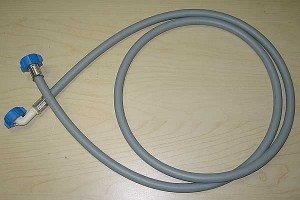 When choosing the inlet and drain hose, be careful. The inlet hose must have a technical passport indicating its parameters; if there is no such passport, then the numbers must be indicated on the hose itself. First of all, this is the maximum permissible water supply pressure, operating pressure and temperature for which the inlet hose is designed. As a rule, cold water hoses have an operating temperature of 20-250C, and for hot water 60-700WITH.
When choosing the inlet and drain hose, be careful. The inlet hose must have a technical passport indicating its parameters; if there is no such passport, then the numbers must be indicated on the hose itself. First of all, this is the maximum permissible water supply pressure, operating pressure and temperature for which the inlet hose is designed. As a rule, cold water hoses have an operating temperature of 20-250C, and for hot water 60-700WITH.
The inlet hose is made of polyvinyl chloride, and at the ends of such a hose a fitting with a plastic union nut is attached. Fittings can be straight or angled; angular ones are attached to the dishwasher. In addition, some hoses are equipped with a special valve (Aqua Stop) designed to protect against water leakage. This type of inlet hose costs much more.
Changing the inlet hose
Replacing the inlet hose in your dishwasher is quite simple. In most dishwasher models, the inlet hose is connected to the machine at the back at the bottom of the body. For example, Samsung and Hotpoint-Ariston dishwashers. To replace the hose, just carefully unscrew the hose nut by hand and screw the new one in place of the old hose.

On some dishwasher models, the inlet hose goes inside the machine; to remove such an inlet hose you will have to disassemble the body a little. For convenience, the machine can be placed on its side or upside down. It is necessary to unscrew the lower front bar and the bottom. This will give you access to the internal parts; at the front of the dishwasher there is a fill hose connected to the fill valve. Using a small wrench, you can unscrew the old water supply hose and connect a new one in its place.

If there is no need to replace the water supply hose, but only need to lengthen it, then in this case you will need another inlet hose of the same length to which you need to extend the hose and a special coupling. It is best to use a brass coupling rather than a plastic one. So, the inlet hose coming from the dishwasher is screwed to one end of the coupling, an extension hose is screwed onto the other end of the coupling, and then the extended hose is connected to the water supply.

For your information! Experts still recommend not extending the water supply hose, but replacing it. After all, an additional joint means an additional risk of water leakage.
Changing the drain hose
The drain hose can be connected to the dishwasher in a variety of places, from the bottom left, the bottom right, and even the top, it all depends on the model and brand of the dishwasher. Let's look at the process of replacing a hose using a Gorenje dishwasher as an example.
- First, disconnect the drain hose from the machine body by removing it from the plastic clips.
- For convenience, place the machine on its left side to allow access to the right side.
- Have rags ready in case there is some water left in the tray.
- Remove the 4 screws from the base of the machine, remove the bottom and set it aside.
Be careful not to jerk the bottom sharply, since the device against water leaks is fixed on it, you can accidentally tear off the wires. - Using pliers, carefully remove the clamp holding the drain hose to circulation pump. This The clamp will have to be replaced along with the hose, since it cannot be reused.

- Remove the check valve from the drain hose and reinsert it into the pump.
- Unscrew the back panel of the dishwasher and move it to the side.
- Disconnect the sleeve holding the hose and pull it out.

- Insert a new hose into the hole, connect it to the pump, and tighten the clamp.
- Assemble the washing machine.
If you need to lengthen the drain hose, you need to purchase an extension hose of the required length, 3 new clamps and a herringbone connecting adapter. The adapter is inserted into the end of the hose coming from the machine and into the extension hose. Both hoses are secured with clamps. Then the second end of the extension hose is put on the siphon branch and secured with a clamp.
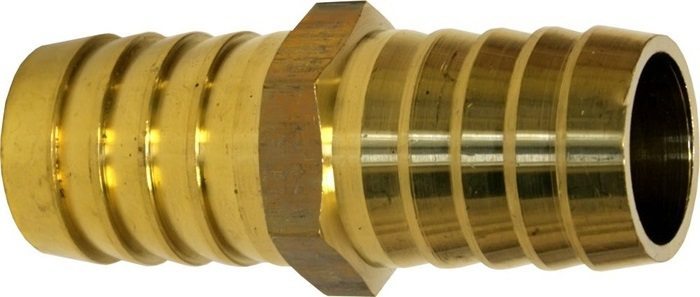
Important! After replacing the water supply hose or drain hose, be sure to run a test wash of the dishwasher to check its functionality and the tightness of the hose connections.
Thus, replacing or extending the drain and fill hoses of a dishwasher is not as difficult as it might seem at first glance. Be patient, follow the instructions and you will succeed.
Interesting:
Reader comments
- Share your opinion - leave a comment

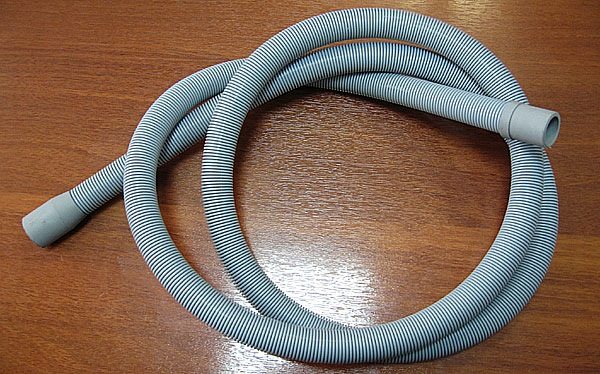
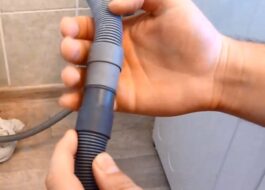

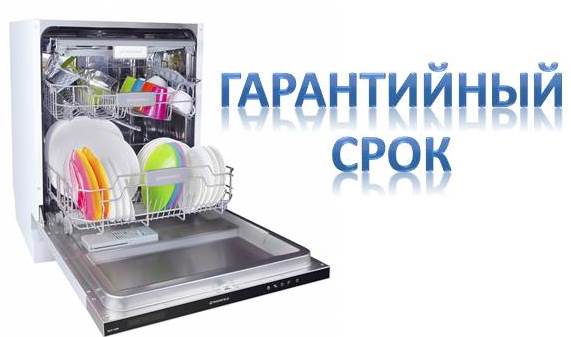
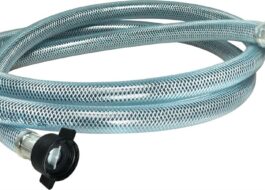















Add a comment